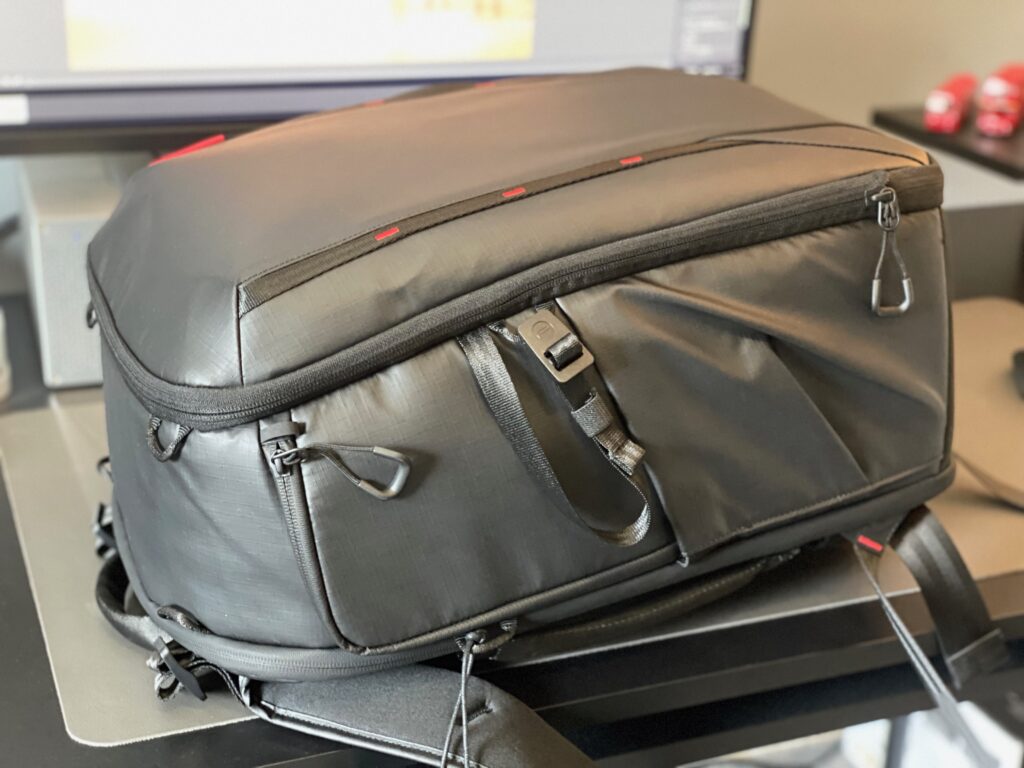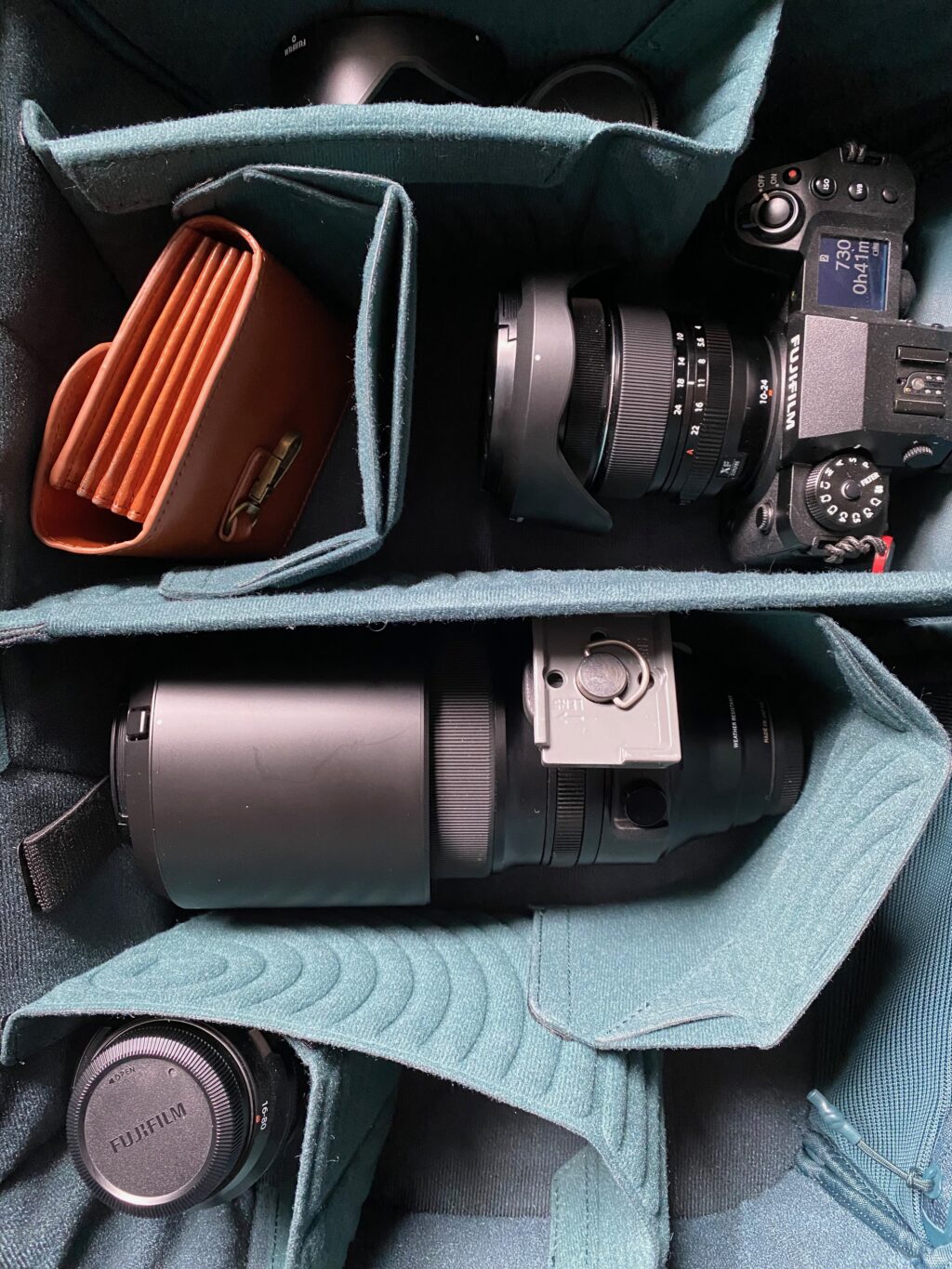If you have followed Light Stalking for a while, you might know I am perpetually searching for the perfect camera bag. A quick search reveals I have written at least five articles about bags/backpacks over the years.
If there is one theme about all the backpacks/bags I have reviewed to date, it’s that I bought and paid for them myself. So when PGYTech got in touch with me asking if I wanted to review their OneMo2 bag, obviously, I said yes. After all, the hunt for the perfect bag is ongoing; could this be the one?
First, the usual disclaimer, as with all product reviews on Light Stalking, full editorial control is retained. The product was supplied free of charge; however, I will be giving my open and honest review of the product. PGYTech will not see this review before it is published.

Who Are PGYTech?
PGYTech is a Chinese-based manufacturer of photographic accessories. Originally for drones and action cameras but increasingly for larger cameras. They have become a well-known brand in the West thanks to their extensive and diverse range of useful peripheral equipment, from camera clips to photographer’s gloves.
They have a large presence in the photographic sections of Amazon and have their own store and third-party distributors.
Initial Impressions Of The OneMo 2 Backpack
PGYTech sent me the 25-liter version of their OneMo 2 backpack; there is also a slightly larger 35-liter version. Taking the backpack out of its box, my initial impressions were twofold. Firstly how solid and well made it felt, and secondly, that it looked rather stylish yet discrete.
Like many of its counterparts, the exterior is made of a waterproof canvas-type material. This felt more solid than many of the bags that I have encountered; it seems to have more rigidity.
I really like the design of the bag.

Despite having all its contemporaries' pockets and storage areas, its external design is quite minimalist. That makes it discrete; it does not shout that it is a camera bag. There is, however, an impressive amount of thought and design that has gone into this bag. It is definitely tailored to the modern, hybrid photographer. Let’s look at the design and layout in more detail.
The Surprise Within
The surprise is that when you open the backpack for the first time, you will see that it’s not one bag but, in fact, two. One entire upper section contains a smaller secondary shoulder-style bag. This day bag can hold a mirrorless camera with a couple of lenses or a drone with a controller and batteries.

Removing the day bag gives you a large compartment for carrying items such as clothing or other nonphotographic items. The lower section is split into multiple areas for camera bodies and lenses. This is all configurable; I found the lower sections too small for my large 100-400mm lens and the upper section too large. However, multiple interior dividers allow you to configure the bag exactly as you want. These dividers are quite solid affairs, again with greater rigidity than others. However, like other bags, I found it hard work to move around to reconfigure the interior. The PGYTech website does have some excellent animations of different ways to change the layout, and perhaps I need to spend a little more time studying the options.
The inside of the back of the OneMo 2 also has two large pouches, one for a tablet, and the other for a laptop.
On The Outside
One thing I really like is the clamshell opening. Rather than the backpack opening from the front, it opens from the rear, where your back would be. This allows for the backpack to be opened to give full access to all the interior compartments. This is an excellent feature for me, so many of the bags I have used do not make it easy to access all the compartments.

There are some very useful pockets within the bag for filters, cables, and other peripherals, and a side access point, allowing you to quickly remove a camera and lens without opening the entire bag.
The backpack's exterior has two points where you can attach a tripod. One to the side of the bag, the other underneath. Also, handles on the back and sides allow you to carry the bag differently.
Another revelation is that the front of the bag features a large expandable pouch. This can add up to 8L of temporary space, albeit with less protection than the main compartment. This is useful for carrying things like tripod heads or gimbals. Hidden away around the pack is a tiny compartment for an Apple Airtag. It is useful to help track down the bag in the event of a theft.
The exterior dimensions of the 25L backpack are airline-safe with a caveat. Some low-cost airlines now have reduced dimensions for their carry-ons, so check before you book.
OneMo 2 In Use – Practicalities
A camera bag cannot be fully reviewed until it has been used in the field a few times. Over the last month, I have used the OneMo 2 Backpack as my daily driver, carrying variations of the kit I use daily. These are my observations.

In terms of comfort, it exceeds. It is certainly one of the most comfortable bags I have ever used. The shoulder straps are wide with the right amount of padding. They easily adjust to your body type. Because the back of the bag is firm but flexible, it feels good on your back.
The waist straps are also very comfortable and help to stop the bag from moving around when walking. While carrying almost my entire kit, the OneMo 2 Backpack felt good all day, I did not get any backache, nor did the bag slip around on my shoulders.
The bag's capacity is excellent; carrying a lot of gear daily is a very good option. There is perhaps too much space for my own needs, but that extra capacity allows me to carry a lightweight jacket or sweater.

I like the fact that the OneMo 2 Backpack opens from the back. It means you are not placing it back on the ground and picking up dirt that you then transfer to yourself. The only criticism I have here is that there is quite a lot going on visually, on the back, such as straps, so it can be tricky to spot the zippers to open the back. I had to flip the straps to the middle to find the zips. However, any new bag will be a learning curve, and all have their foibles.
Epilogue
I had the chance to use this backpack over a three-week road trip and photography shoot around Europe. I found it to be one of the very best backpacks I have ever used. The key to this was its versatility. I could do stock video shoots carrying my gimbal inside the pack. I did blue hour photography shoots carrying all my lenses in the bag and my tripod attached outside. I even did a combined ground and aerial shoot, taking my new DJI Mini 3 Pro and controller inside the backpack.
Summary
Overall I have been very impressed with the OneMo 2 Backpack. It’s capacious, strong, and comfortable. It’s the right size to work as an airline carry-on and allows you to carry all your kit, including a tripod for all-day shoots. If I were in the market for a camera backpack for my travel shoots, the OneMo 2 Backpack would definitely make the cut.





1 Comment
I own the original onemo, onemo lite, and the onemo2 (35). I prefer the design of the original onemo and feel the design took a step backwards. Mostly I prefer the suitcase style of opening where the back opens sideways. This allows me to set my bag down and open it without taking as much room. I can even prop the flap back against a wall. I also prefer the battery holders of the original.